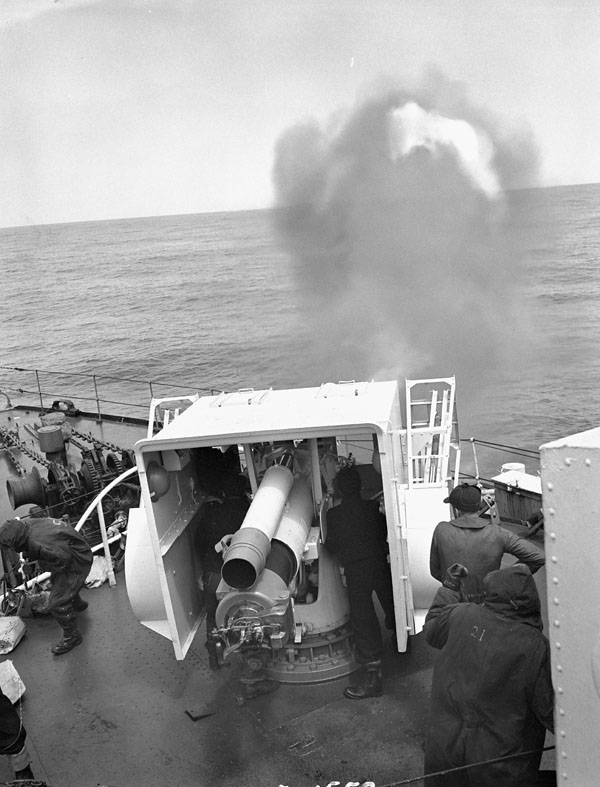
Admiral Fisher had always objected to heavy secondary batteries on capital ships, so at his insistence, the 4" (10.2 cm) caliber was chosen for the secondary weapons on the battlecruisers of the Repulse and Courageous classes. Initially, either the 4" (10.2 cm) QF Mark V or the 4" (10.2 cm) BL Mark VIII were to have been installed, but the first weapon was difficult to arrange for director firing and the second had a low rate of fire. The best features of both, the Mark V body and the Mark VIII breech mechanism, were combined to create the Mark IX.
The Repulse class battlecruisers used both single and triple mountings, with the latter mounting having the guns individually sleeved, an unusual feature for a secondary weapon. This mounting required a very large crew of 32 and, as it lacked power assist, proved to be quite cumbersome.
During World War II, this weapon was used in single mountings on many corvettes as well as on numerous smaller ships including 1,200 on DEMS.
Mark IX was of wire wound construction with tapered inner A tube and jacket. Mark IX* differed in having no inner A tube. Mark IX** was introduced to suit older manufacturing equipment at EOC and COW and had no inner A tube, a B tube and overlapping short jacket and an old-style step wire-winding method. All had Welin breech blocks with Vickers mechanisms. Some 2,382 were built of which 2,193 were still in service as of September 1939. Actual bore length was 44.35 calibers.
The Mark X was originally built for the Norwegian Nidaros class coastal defense ships which were taken over at the start of World War I and became the HMS Glatton class. These guns were of Elswick Pattern T and were partly wire wound with coned breech block. A total of fifteen guns were built and these were used only on DAMS.
The data that follows is specifically for the Mark IX, but the ballistics for the Mark X were similar.
| Designation | 4"/45 (10.2 cm) BL Mark IX and Mark X |
|---|---|
| Ship Class Used On | Mark IX
World War I Renown and Courageous classes Inflexible as rearmed Erebus and Marshal Ney classes Sir John Moore and M.27 World War II
Mark X
|
| Date Of Design | About 1913 |
| Date In Service | 1916 |
| Gun Weight | Without Breech Mechanism: 4,620 lbs. (2,096 kg)
With Breech Mechanism: 4,749 lbs. (2,154 kg) |
| Gun Length oa | 184.6 in (4.689 m) |
| Bore Length | 177.4 in (4.506 m) |
| Rifling Length | 149.4 in (3.795 m) |
| Grooves | (32) 0.037 in deep x 0.270 (0.94 x 6.86 mm) |
| Lands | 0.1227 in (3.117 mm) |
| Twist | Uniform RH 1 in 30 |
| Chamber Volume | 470.3 in3 (7.707 dm3) |
| Rate Of Fire | 10 - 12 rounds per minute |
| Type | Bag |
|---|---|
| Projectile Types and Weights | HE: 31 lbs. (14.1 kg)
SAP 1: N/A [probably about 31 lbs. (14.1 kg)] |
| Bursting Charge | N/A |
| Projectile Length | N/A |
| Propellant Charge | World War I: 7.7 lbs. (3.5 kg) MD16
World War II: 7.9 lbs. (3.59 kg) SC103 or 9.39 lbs. (4.3 kg) NF/S164-048 |
| Muzzle Velocity | 2,625 fps (800 mps) |
| Working Pressure | 18.5 tons/in2 (2,910 kg/cm2) |
| Approximate Barrel Life | 3,600 rounds |
| Ammunition stowage per gun 2 | Inflexible: 150 rounds 3 Renown: 200 rounds Courageous: 150 rounds Monitors: 400 rounds 4 Others: N/A |
| Elevation | Distance | 30 degrees | 13,500 yards (12,344 m) |
|---|
| Elevation | Distance |
|---|---|
| 30 degrees | 13,840 yards (12,660 m) |
| Designation 1a | Triple Mount 2a Renown (5), Courageous (6) and M27 (1): T.I. Mark I Single Mount
|
|---|---|
| Weight | T.I. Mark I (less shield): 17.475 tons (17.755 mt)
T.I. Mark I (with shield): 18.5 tons (18.8 mt) CPI: 4.721 tons (4.797 mt) |
| Elevation | T.I. Mark I: -10 / +30 degrees
CPI: -10 / +30 degrees |
| Elevation Rate | Manually operated, only |
| Train | 360 degrees |
| Train Rate | Manually operated, only |
| Gun recoil | N/A |
- ^The Monitors had many armament changes during their careers. The quantities shown above represent the maximum number of guns carried at any time.
- ^
As mentioned above, the triple mount was a clumsy design. Quoting from "The Loss of Repulse and Prince of Wales" by A.E. Jacobs:
"The triple mountings were always extremely difficult to train, and the general procedure when moving through a large arc was for the two trainers at the 'normal' and 'director' training wheels to be assisted by the remainder of the crew pushing on the breeches or muzzles."
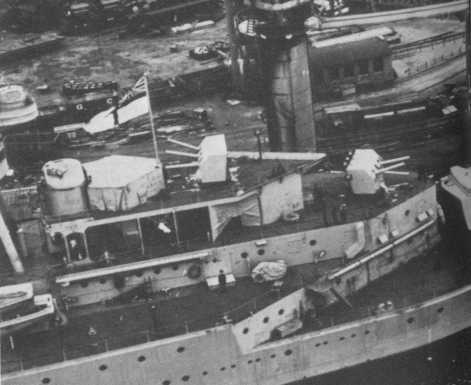
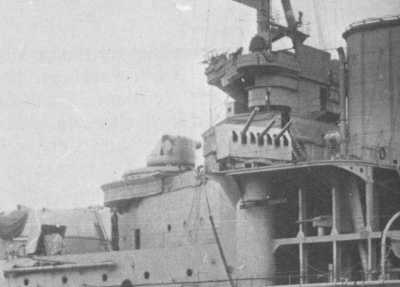
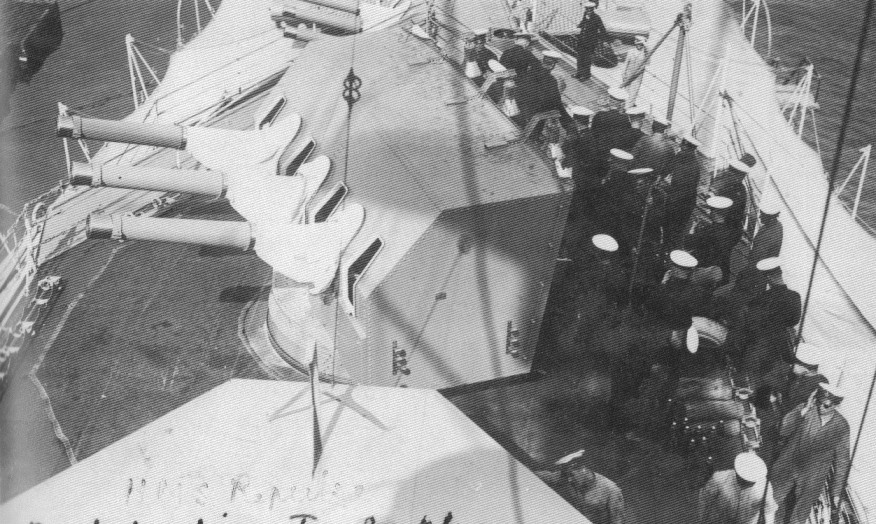
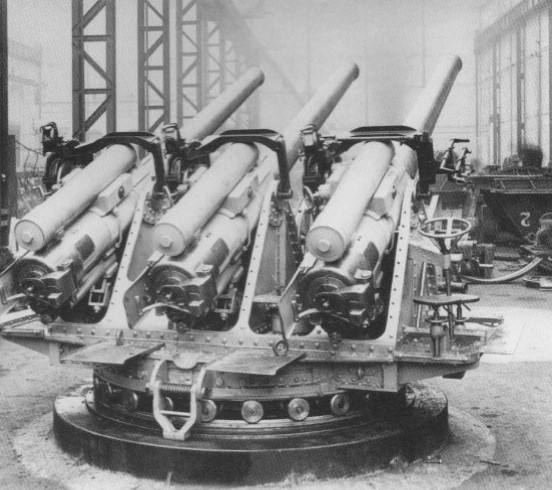
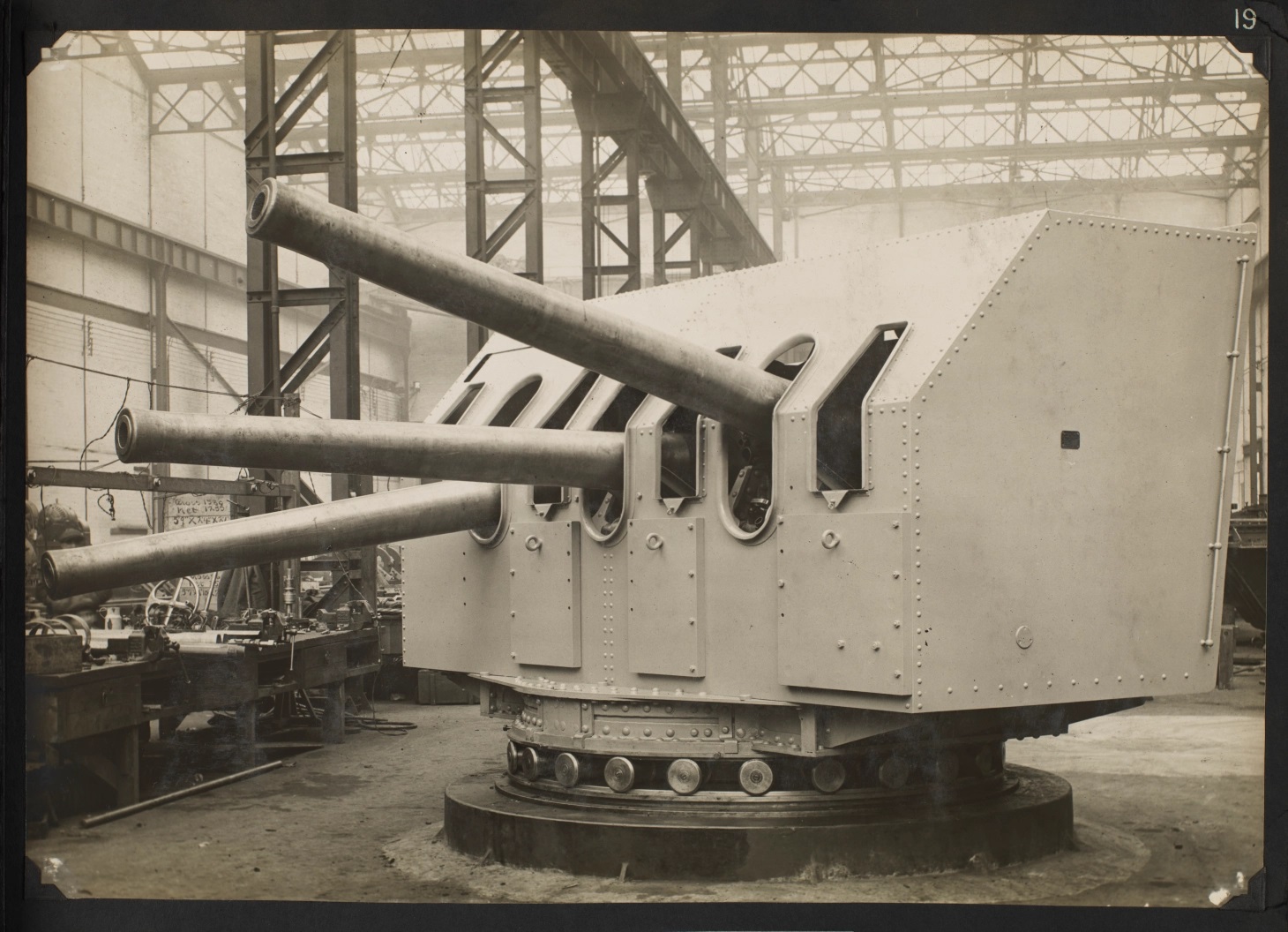
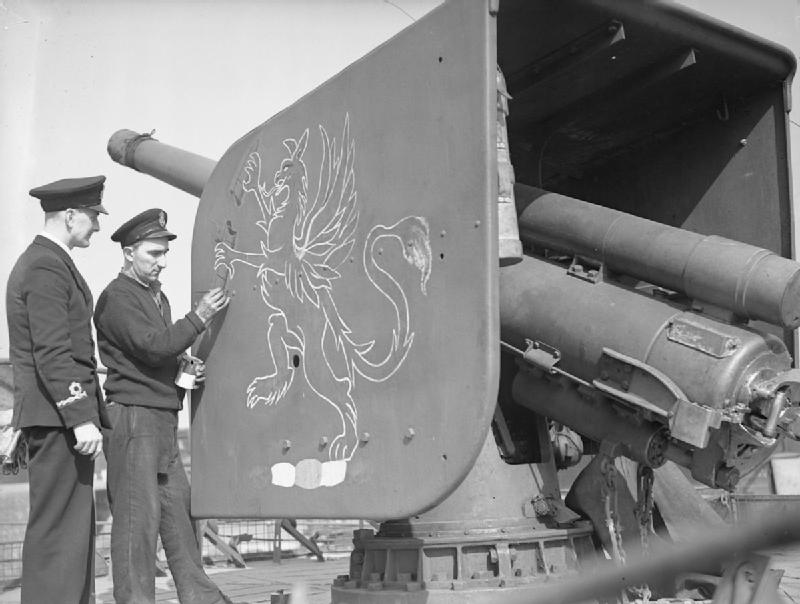
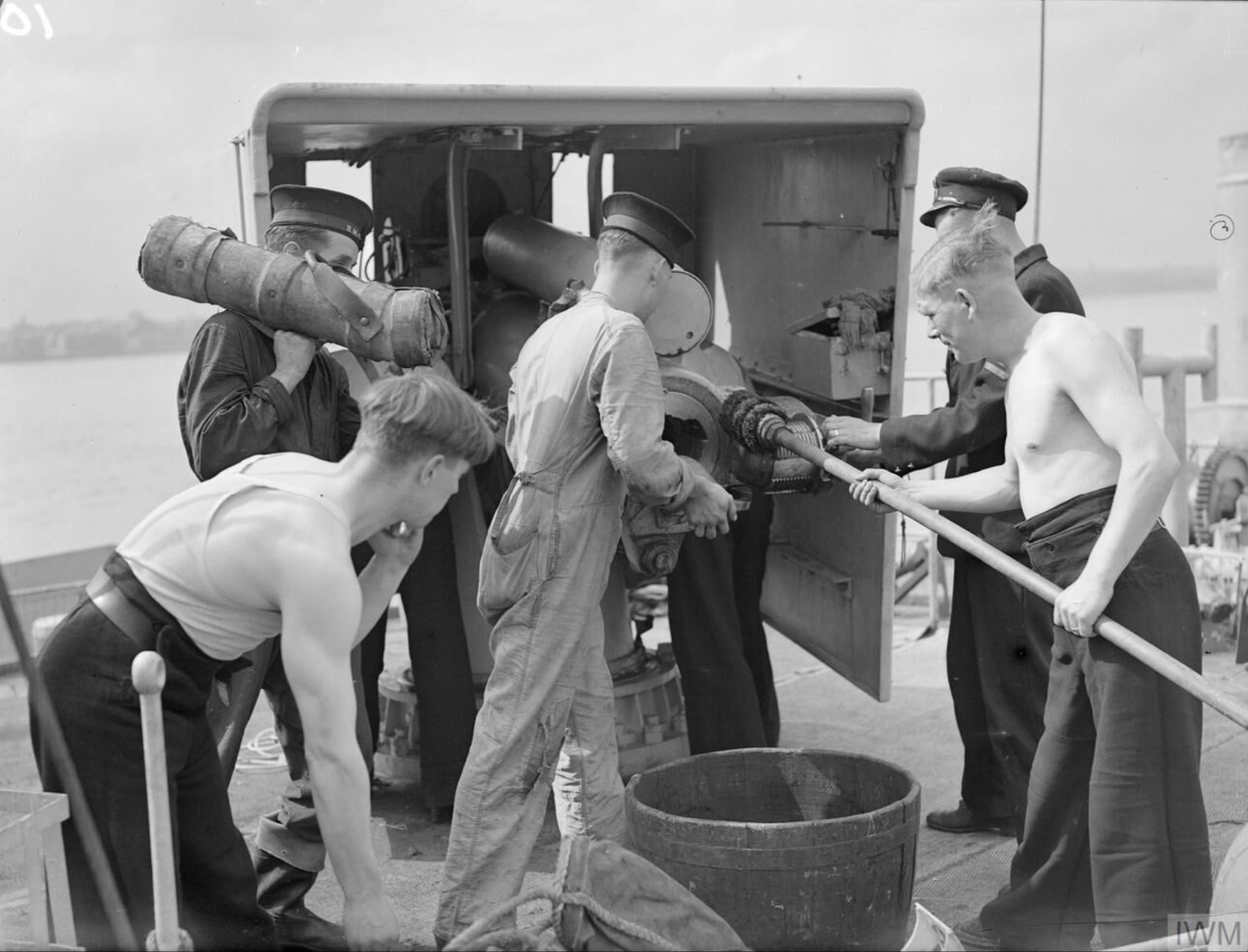

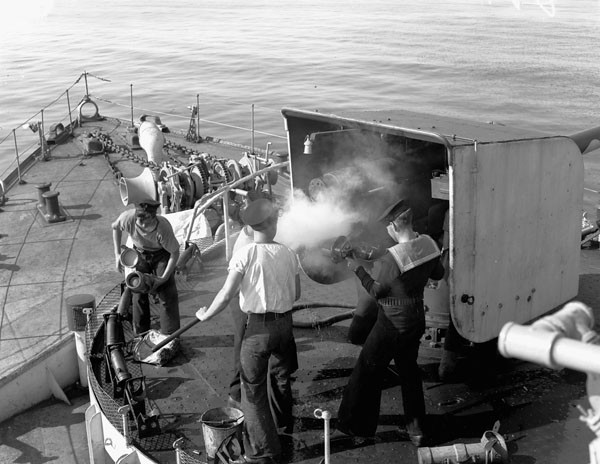
"British Battleships of World War One" (New Revised Edition) and "British Battleships 1919 - 1939" (Revised Edition) by R.A. Burt
"Big Gun Monitors: The History of the Design, Construction and Operation of the Royal Navy's Monitors" by Ian Buxton
"Naval Weapons of World War Two" and "British Naval Guns 1880-1945 No 17" article in "Warship Volume X" both by John Campbell
"The Battleship Builders: Constructing and Arming British Capital Ships" by Ian Johnson and Ian Buxton
"British Battleships of World War Two" by Alan Raven and John Roberts
19 July 2006 - Benchmark
28 February 2009 - Added information about monitors
03 January 2010 - Added photograph of Sherbrooke
19 May 2012 - Added reference. Added close-up picture of triple mount on HMS Renown
03 February 2014 - Added ammunition outfit and mounting information for Inflexible
24 May 2014 - Added photograph of HMCS Pictou
25 April 2021 - Converted to HTML 5 format, added photograph of triple mount under construction
01 October 2022 - Added photograph of finished triple mount, updated photograph of HMS Dianthus
11 September 2023 - Added ammunition stowage for Renown and Courageous classes
